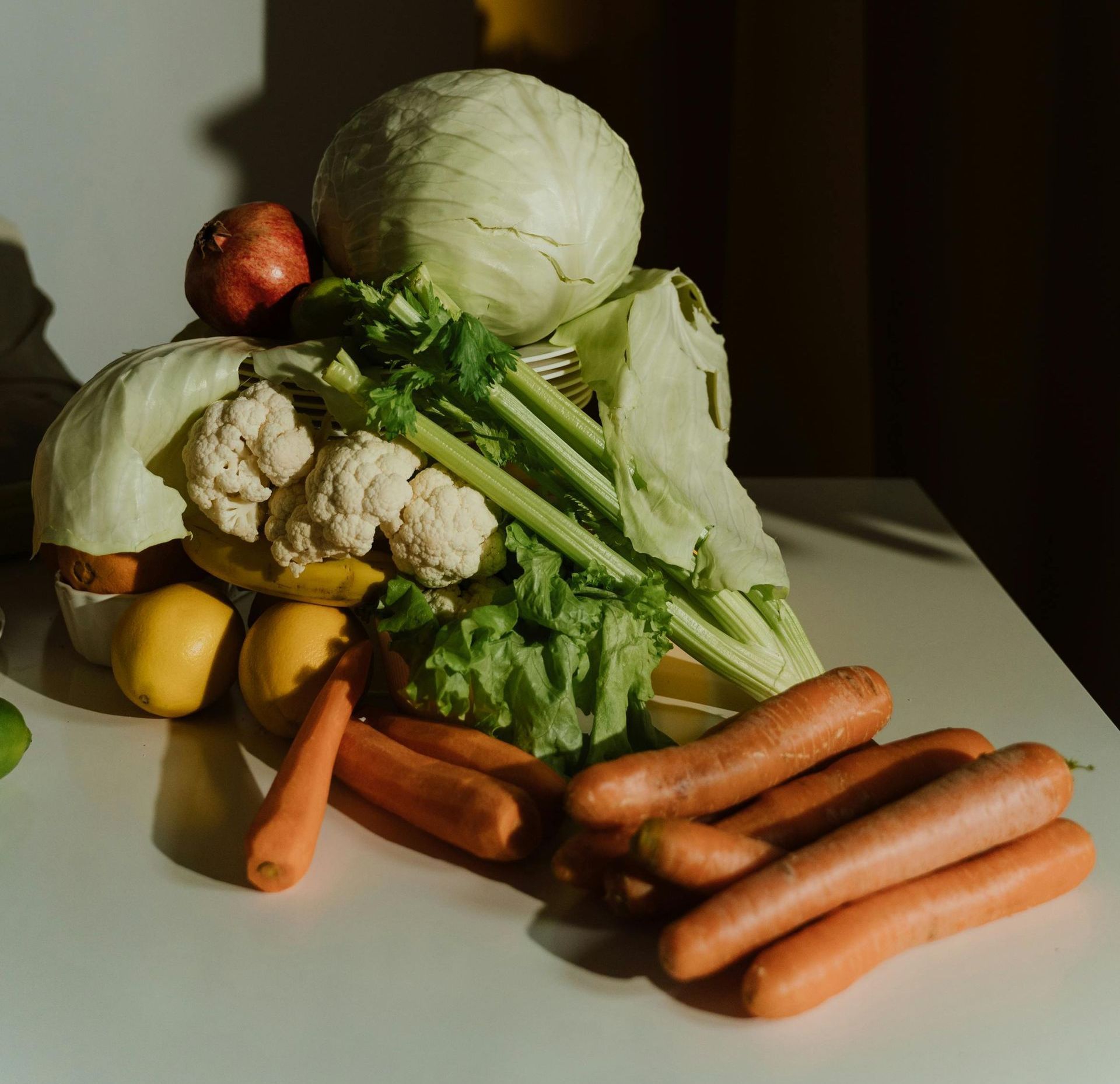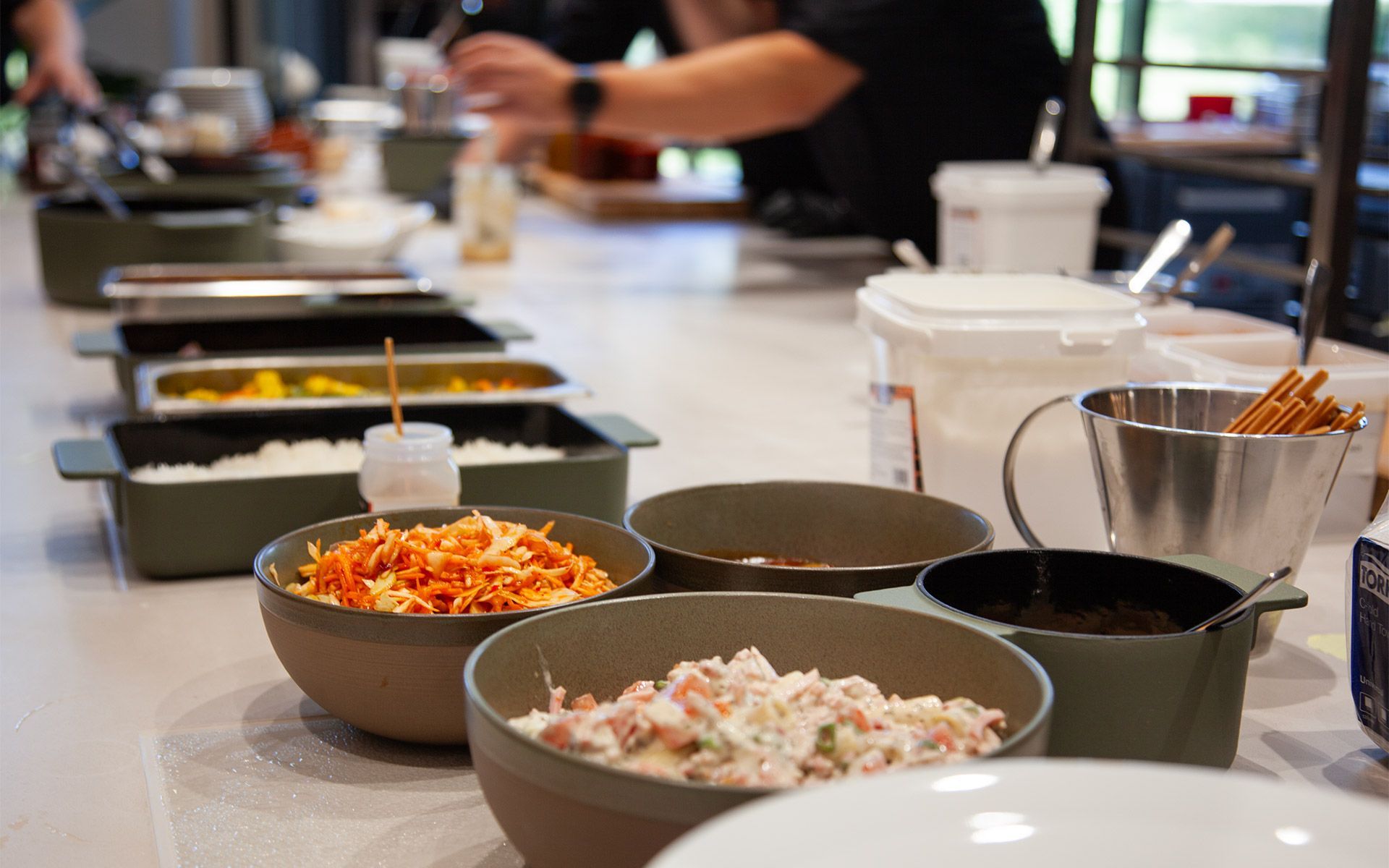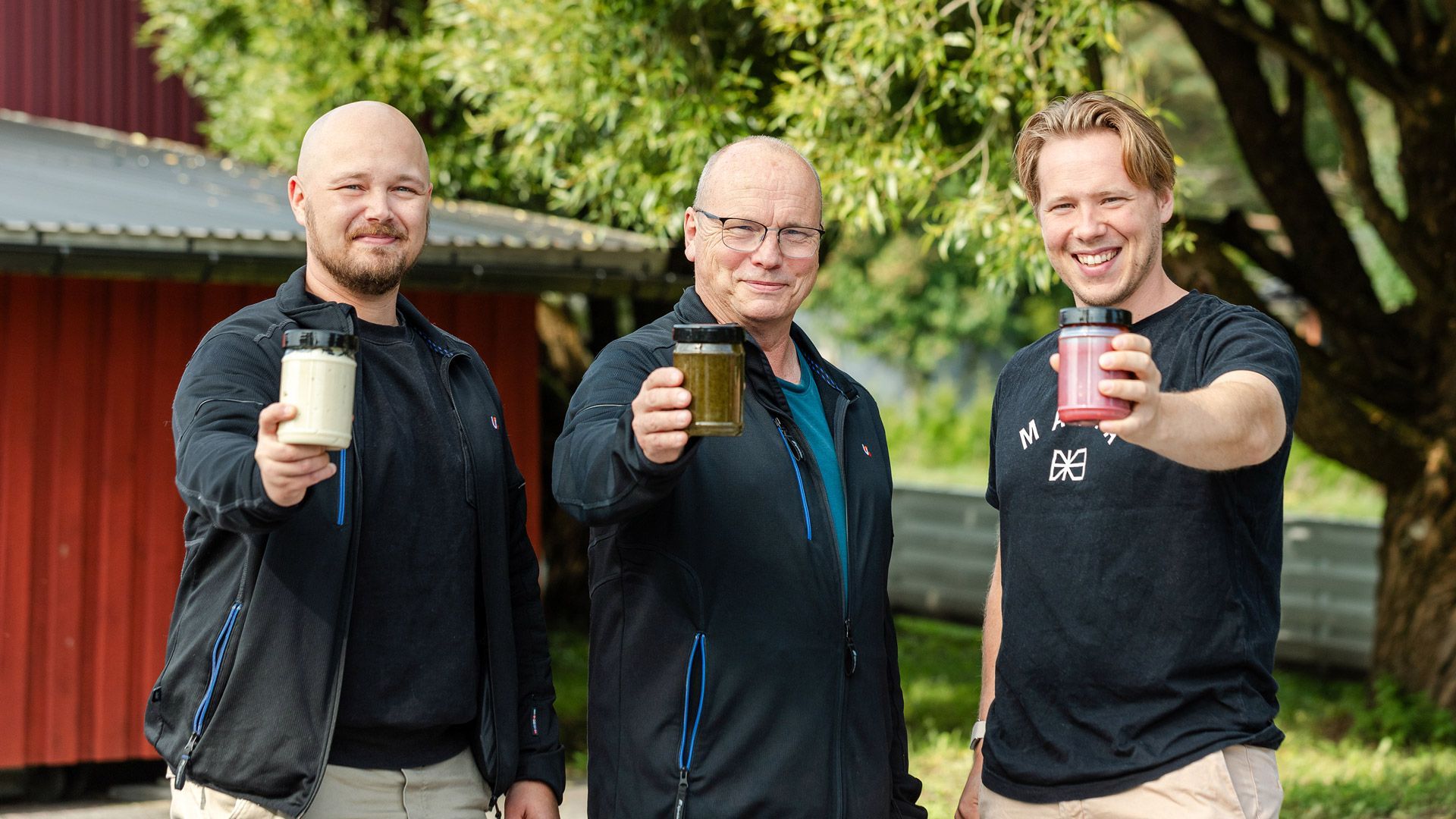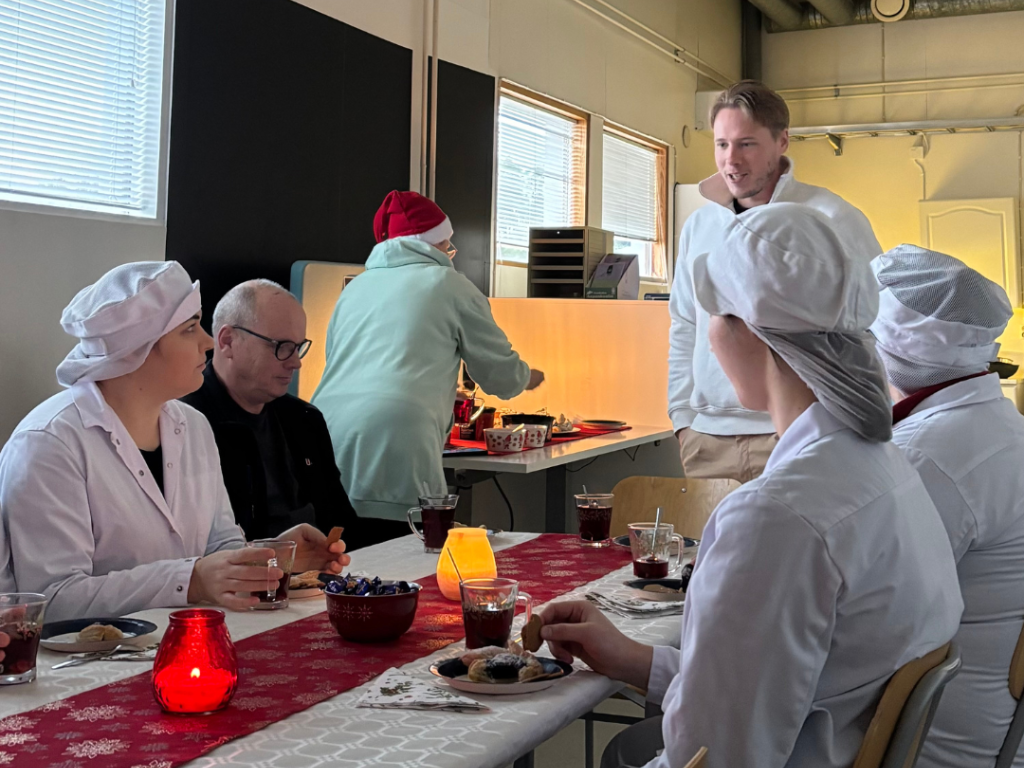Pysy maun tasalla!
Last time we explored atSauce's story and how Japanese fermentation expertise found its way to Finland. This time we'll delve into fermentation itself: what makes this ancient method so unique, and why has it become central to modern food culture?
Fermentation is a complex biochemical chain of events where microbes transform simple ingredients into unique combinations of texture and flavor. The transformation once seemed like magic but is now a precisely controlled biotechnological process. While ancient masters relied on experience and tradition, modern technology enables precise control of fermentation and the development of new flavor innovations. (Kumar et al. 2021.)
1 What is Fermentation?
Simply explained, fermentation is a process where small microbes, such as bacteria and yeasts, change food's composition. They convert sugars, starches, proteins, and peptides into simpler substances, creating familiar sour flavors and preservative properties. (Smid & Hugenholtz 2019.)
The wonders of fermentation surround us in our daily lives. Morning yogurt, lunch rye bread, and evening kimchi are all demonstrations of fermentation artistry. In dairy products, fermentation creates yogurt's creamy texture, cheese's deep aromas, and buttermilk's fresh taste (Anderson & Nielsen 2023). In bakery products, sourdough and starter cultures get their unique flavors from fermentation, as do pickles and sauerkraut in the vegetable world. In beverages, fermentation appears in the form of beer, wine, and kombucha, while in Asian cuisine, soy sauce and miso are masterpieces of fermentation (Yoshida et al. 2020).
Successful fermentation requires attention to a few basics. The temperature must be suitable - neither too cold nor too hot. Clean equipment and quality ingredients are essential. In most fermentations, the correct salt content is a critical factor. Most importantly, however: fermentation requires time and patience. (Kuldjärv 2024.)
The brilliance of fermentation lies in its versatility. Fermentation brings out deeper flavor nuances and especially develops umami, that fifth basic taste that gives food its richness. At the same time, it creates multidimensional taste experiences that cannot be achieved through other preparation methods. (Kumar et al. 2021.) A home cook can easily begin their fermentation adventure with simple recipes. Park & Kim (2024) recommend starting with fermented vegetables: they only require clean containers, fresh ingredients, and a dash of patience. The most important thing is to follow instructions carefully, especially regarding salt content, and give good flavors time to develop.
Fermentation creates multidimensional taste experiences that cannot be achieved through other preparation methods.
From a health perspective, fermentation is like nature's own superfood factory. Fermentation increases food's nutritional value, produces beneficial probiotics, vitamins, and antioxidants, and makes food easier to digest. In terms of preservation, fermentation is superior: it naturally extends food shelf life, reduces food waste, and preserves nutrients better than most other preservation methods. (Tamang et al. 2020.) Modern consumers value natural, healthy, and environmentally friendly foods, and fermentation perfectly addresses these needs. It offers a natural way to preserve food, a healthy alternative to ultra-processed foods, and an opportunity to utilize local ingredients sustainably while respecting the environment. (Magnusson et al. 2023.)
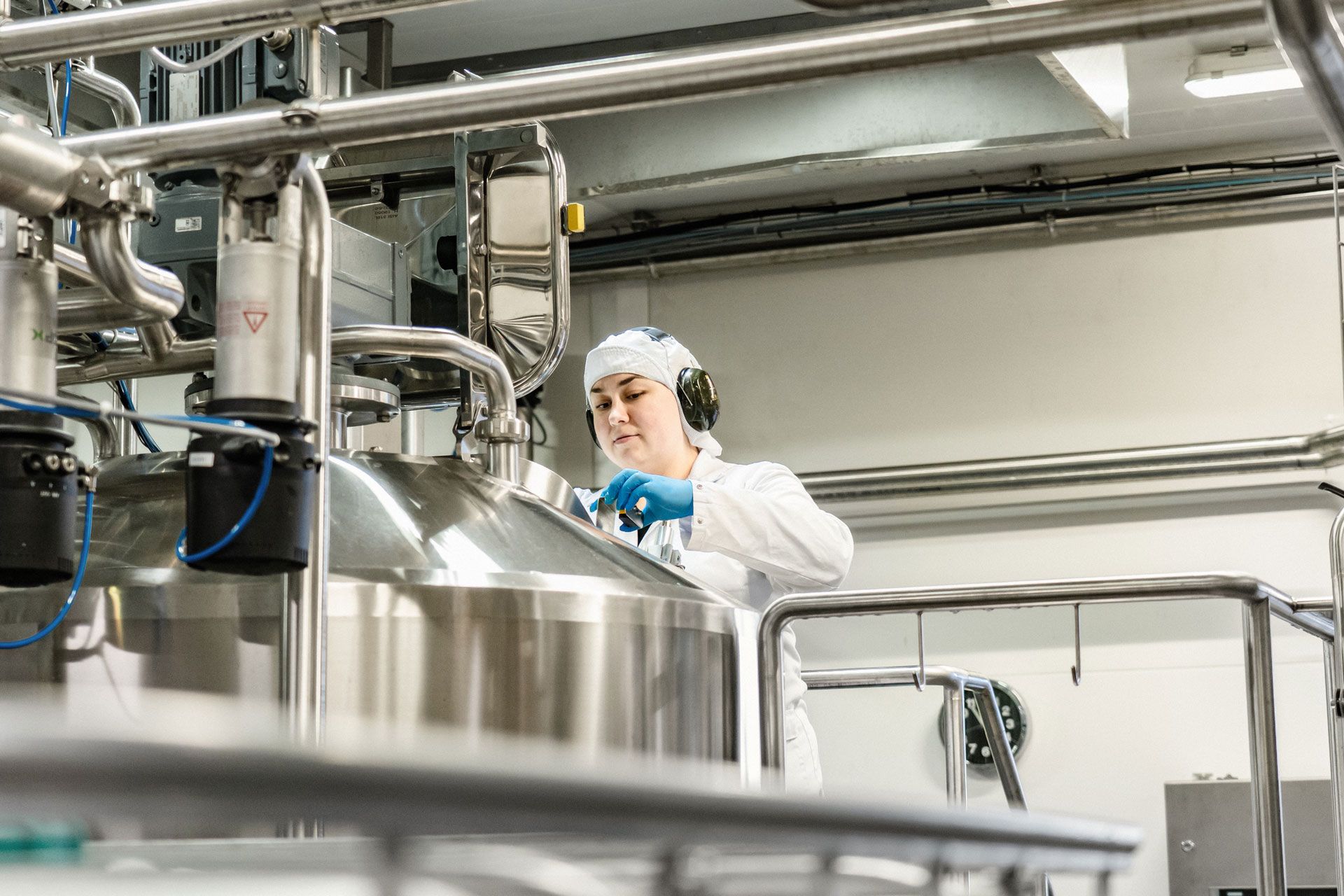
2 The Story of Fermentation - From History to Present
"In the old days, when even salt was scarce, food was preserved through souring or fermentation," reminds Medical Doctor Heikki Arvilommi in Maaseudun Tulevaisuus (2021). Fermentation is a skill refined over millennia that has shaped food cultures around the world (Steinkraus 2018). An ancient process that likely began by chance has evolved into one of humanity's most significant food preparation methods (Tamang et al. 2020).
While our Finnish ancestors were fermenting rye bread and sour milk, Asia was developing flavorful fermented products like soy sauce and miso.
Fermentation has special significance in Finland. According to Professor Seppo Salminen, just a few generations ago, over half of the food eaten by Finns was fermented in one way or another (IL 2019). Karelian pasties, rye bread, and buttermilk are examples of traditional fermented foods. The harsh northern conditions gave birth to innovative solutions for food preservation (Salminen & Hallikainen 2022). Today, fermentation uniquely combines old craftsmanship with modern technology. This is where the power of fermentation lies: it is both traditional and modern, both simple and complex process (Kuldjärv 2024.) Traditional skill has evolved into industrial innovation, enabling the production of authentic flavors on a large scale. This development is particularly evident in how traditional fermentation techniques have found new applications in industrial production. While our Finnish ancestors were fermenting rye bread and sour milk, Asia was developing flavorful fermented products like soy sauce and miso. The global diversity of fermentation traditions has created the foundation for modern food industry (Tamang et al. 2020).
2.1 World History of Fermentation
The history of fermentation extends thousands of years back, intertwining deeply with human development. Archaeological findings show that ancient Mesopotamians were making fermented beer 7000 years ago (Steinkraus 2018). Fermentation was one of the first biotechnological processes that humanity learned to control (Kumar et al. 2021). In China, the production of soy sauce through fermentation began over 2500 years ago, and this tradition spread throughout Asia via the Silk Road (Wang & Zhang 2021).
Archaeological findings show that ancient Mesopotamians were making fermented beer 7000 years ago.
The significance of fermentation wasn't limited to just food preservation, as it enabled the development of trade when food could be transported longer distances (Tamang et al. 2020). Fermented products also brought variety to diets during times when fresh ingredients were limited. Especially in northern countries like Finland, fermentation was a vital skill for winter survival. Sauerkraut, pickles, and sour bread weren't just food, but prerequisites for survival. (Tamang et al. 2020.)
While the ancient Chinese were developing soy sauce production, the Japanese mastered miso craftsmanship, and Europeans created their own cheese and wine-making traditions. (Kumar et al. 2021.)
The history of fermentation is a history of innovations, where each culture developed techniques to meet local needs. In Northern Europe, fermentation enabled the preservation of milk into cheese and sour milk, while in India, yogurt and lassi were developed, in the Middle East, sour bread and kefir. In the Far East, complex fermentation processes were created to process soybeans into various food products. (Anderson & Nielsen 2023; Magnusson et al. 2023.) Each culture has its own fermentation traditions that reflect local ingredients and taste preferences.
2.2 Asian Fermentation Traditions
Each new generation has brought its own contribution to the process, developed new techniques, and found new applications. This continuous development has enabled fermentation to transition from traditional craftsmanship to a modern industrial sector, combining millennia of wisdom with modern technology. (Kumar et al. 2021.)
In Asia, fermentation evolved into its own art form, where each region refined its own special traditions. Kuldjärv (2024) describes how in Japan miso, sake, and soy sauce, in Korea kimchi, and in China tofu are examples of how fermentation has evolved into a sophisticated part of food culture. Particularly in Japan, fermentation is not just a food preparation method but a philosophy emphasizing patience, harmony, and respect for ingredients (Yoshida et al. 2020).
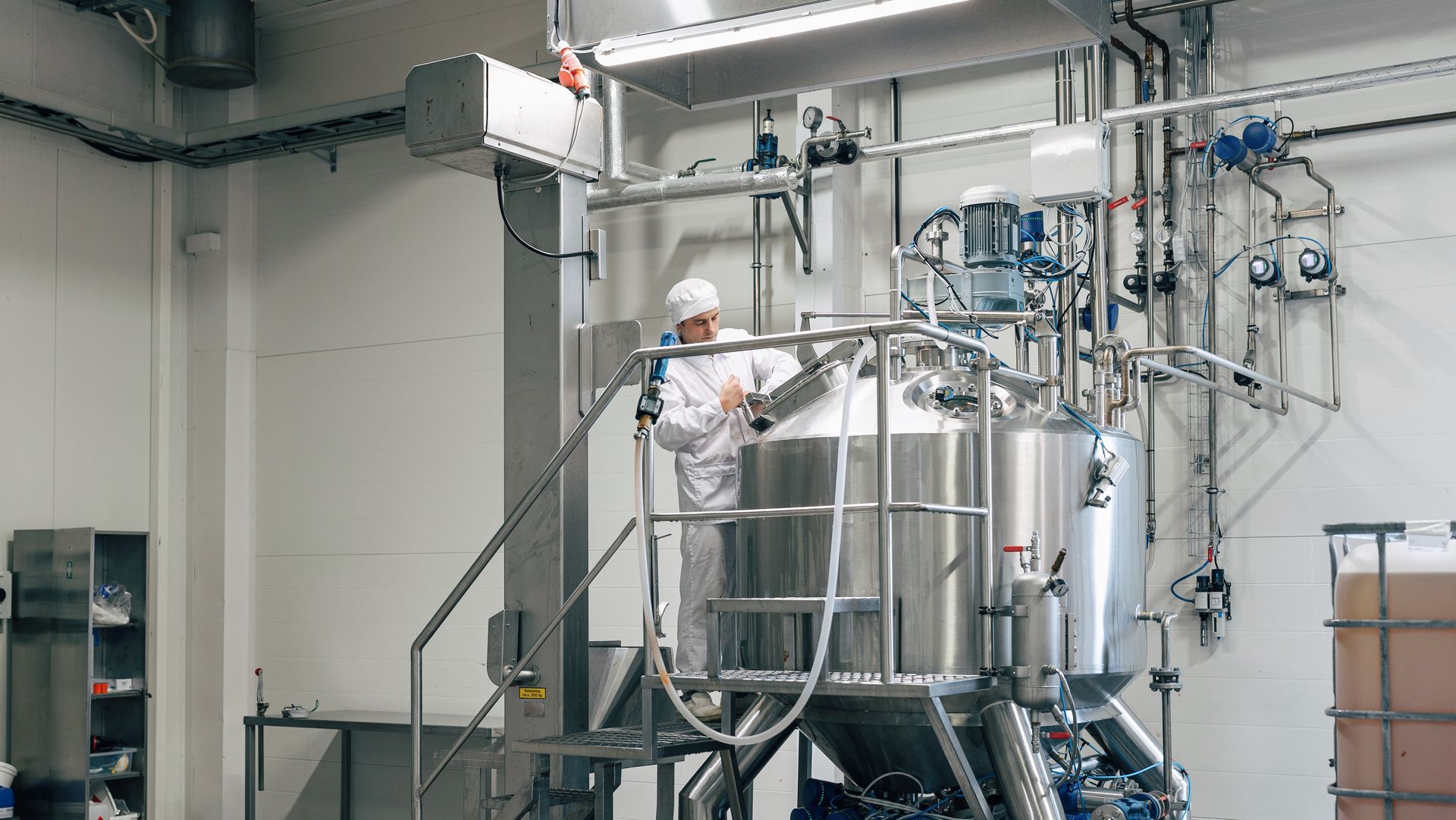
Japanese fermentation expertise is particularly interesting as it combines centuries-old tradition with uncompromising precision. For example, in making miso, the fermentation of rice and soybeans can take from months to even years (Tanaka et al. 2023). This long-term process not only produces unique flavors but also improves the nutritional value of ingredients. Similarly, in soy sauce production, microorganisms transform soybeans and wheat in a complex process into a deep, umami-rich sauce. (Tamang et al. 2020; Kumar et al. 2021.)
Korean kimchi, in turn, represents the diversity of fermentation. In this traditional preparation method, the fermentation of cabbage and vegetables combines with spices like chili and garlic, creating a multi-layered flavor profile (Park & Kim, 2024). Chinese tofu production, meanwhile, demonstrates how fermentation can transform a simple ingredient, the soybean, into a versatile protein source (Li et al., 2022).
2.3 The Era of Industrial Fermentation
The Industrial Revolution brought a new dimension to fermentation. In the 19th century, Louis Pasteur's discoveries enabled better understanding and control of fermentation. This began the industrialization of fermentation, leading to the development of many familiar products. The scientific breakthrough didn't replace traditional expertise; rather, it helped understand why age-old methods worked. (Kumar et al. 2021.) In the 21st century, fermentation has returned to its roots, but with a modern twist (Magnusson et al. 2023).
Smid & Hugenholtz (2019) demonstrate in their research what ancient craftsmen learned through experience: in the fermentation process, microorganisms convert carbohydrates, proteins, and fats into simpler compounds. This process, which once took place in clay pots and wooden barrels, now occurs in precisely controlled fermentation tanks. For example, Japanese masters' centuries-old understanding of soy sauce production received a scientific explanation: protein breakdown, or proteolysis, produces peptides and free amino acids, creating that deep umami flavor that Japanese have refined for generations. (Kumar et al. 2021.)
The process that once took place in clay pots and wooden barrels now occurs in precisely controlled fermentation tanks.
Kuldjärv (2024) emphasizes that modern industrial fermentation relies on the same principles as ancient methods: control of temperature, pH, and salt content. The difference is that while ancient masters relied on experience and their senses, modern technology enables precise measurement and adjustment of these parameters. These principles are also continued by atSauce as they apply their developed fermentation process to innovative fresh flavoring solutions for commercial kitchens and the food industry. More about these atSauce solutions will be covered in later blog posts in this series.
References
Anderson, K., & Nielsen, M. (2023). Traditional Fermentation in Northern Europe. Food Science and Technology.
Arvilommi, H. (2021). Fermentation as a Food Preservation Method. Maaseudun Tulevaisuus.
Kuldjärv, R. (2024). Fermentation: Plain and Simple. Hardie Grant Books.
Kumar, H., et al. (2021). Industrial Fermentation: Principles and Applications. Biotechnology Advances.
Li, X., et al. (2022). Traditional and Modern Tofu Production Methods. Journal of Food Science.
Magnusson, M., et al. (2023). Next-Generation Fermentation Technology. Trends in Biotechnology.
Park, S., & Kim, J. (2024). Kimchi Fermentation: Traditional Methods and Modern Applications. Korean Journal of Food Science.
Salminen, S. (2019). Make Your Food Super Healthy – An Old Method is Science's New Discovery. Iltalehti, October 31, 2019.
Smid, E. J., & Hugenholtz, J. (2019). Functional Genomics of Food Fermentation. Annual Review of Food Science and Technology.
Steinkraus, K. H. (2018). Handbook of Indigenous Fermented Foods. CRC Press.
Tamang, J. P., et al. (2020). Fermented Foods in a Global Age: Current Research and Future Prospects. Nature Reviews Microbiology.
Tanaka, Y., et al. (2023). The Art of Miso Making: From Traditional to Industrial Scale. Japanese Journal of Food Science.
Wang, L., & Zhang, H. (2021). The Silk Road and Fermentation Technologies. Asian Journal of Food Science.
Yoshida, S., et al. (2020). Japanese Fermentation Techniques: A Historical Perspective. International Journal of Food Microbiology.
Täällä jaamme tuoreimmat kuulumiset, kätevät vinkit, inspiroivat asiakastarinat ja muut herkulliset jutut suoraan meiltä sinulle. Kurkkaa kulissien taakse, nappaa ideoita omaan arkeesi ja tutustu ihmisiin sekä projekteihin atSaucen takana.
